Review by Pete Vack
Order from publisher: https://www.crowood.com/products/alfa-romeo-alfasud-by-chris-martin
Alfasud The Complete Story
176 pages, Hardcover $25-35 on Amazon
Crowood Publishing, UK
By Chris Martin
Chris Martin’s new book, Alfasud, the complete story, answers a lot of questions that begin with ‘why.’
Why was the Alfasud necessary?
Why was it designed by Rudolf Hruska?
Why was it not built at Arese?
Why was it built in Naples?
Why were there so many problems with the labor force and factory?
What was unique about the design?
Why were the Russians blamed for the rust problems?
Was it a success?
Chris nailed almost all of these questions in a very convincing manner, well researched and interesting to read. Plus, this is not your normal automobile hagiography. After the requisite mini Alfa Romeo history, an excellent chapter is devoted to the history of the design and development of the Alfasud. Even more interesting is Martin’s research in Chapter Three on the politics involved in the construction of the plant in Naples. (Martin says that this could have been a book in itself!) Building a major new facility in any area is always fraught with local and national politics, but in Naples such efforts naturally sound more Machiavellian. The fact that Hruska’s team was able to produce a new car and a new factory within the allotted timeframe and not too far above budget was a remarkable achievement.
Martin then lays out each model in order of its introduction and provides ample photos and specs for each. A chapter on special models, prototypes and show cars is followed by a chapter on the various competitions entered by Alfasuds in Europe, the UK and Australia…much more than we thought. Nor did he forgo serial numbers; an appendix lists serial numbers and color codes.
After a complete model description, Chris devotes Chapter Ten to the production problems of the Sud. It is all there, subtitled “The Problems, Rust, Strikes, Politics and Corruption.” Design wise, the car was almost perfect, a great combination of Italdesign and Hruska’s excellent engineering team. The rust problems in the early years were a huge liability, and it seems that no one really had the right solution. The later cars were much better in that respect, no doubt. But the damage to the reputation had been done. For the first time, Martin explores the rust issue in depth and comes up with some interesting conclusions. Many of us had heard that cheap Russian steel was at the core of the problem, but this is not supported by facts. Martin’s conclusions seem much more likely, though harder to swallow. Martin admits to being part of the problem (along with VeloceToday). “I too had bought that old ‘Soviet steel myth’ and had intended to investigate further along those lines until I could find NO documentary evidence, just repeated hearsay. Only then did I find other clues about the truth and I must have spent a month alone just digging for that. So I apologize for being one of those who believed it and as I too published such a myth myself back in 2014, right here on this website: https://velocetoday.com/fixing-the-alfasud/ I am as guilty as any others for keeping that lie going and I am glad to have had this opportunity to put things right.”
But after the book was digested, one question still remained.
Why, after 50 years since the Alfasud was introduced, are we still writing, reading and talking about it? Most have rusted away, none were legally imported into the U.S., Alfa lost money on each car they sold and most importantly, the Alfasud was not built at Arese, and the famous badge now came sans ‘Milano’, had no link with past or present Alfas, and with a flat four front drive had not even the slightest hint of Alfa DNA.
We realized the answer lay within our own experience.
Having owned and driven on a daily basis Minis, a Peugeot 304, a Fiat 128 and the Renault R16, front wheel drive vehicles were no mystery and we knew well the problems associated with even the best of the designs. They all handled well but not happily, and each one never failed to let one know that the front wheels were both driving and turning.
Then in 1977 we found a forlorn and illegal Alfasud sitting in the back lot of a car dealer, left by a Dutch diplomat who had brought it into the U.S. as his personal transportation. It needed a bit of work, the lights were broken, the engine wanted a tuneup but the dreaded rust had not yet taken firm hold (it eventually would, however). We had saved the car but realized that it was going to be hard to make it legal in the U.S. and soon put an ad in Hemmings. In the meantime, we drove it as much as we dared. Evan Wilson, a Giulietta fan, realized its worth and snapped up the deal immediately.
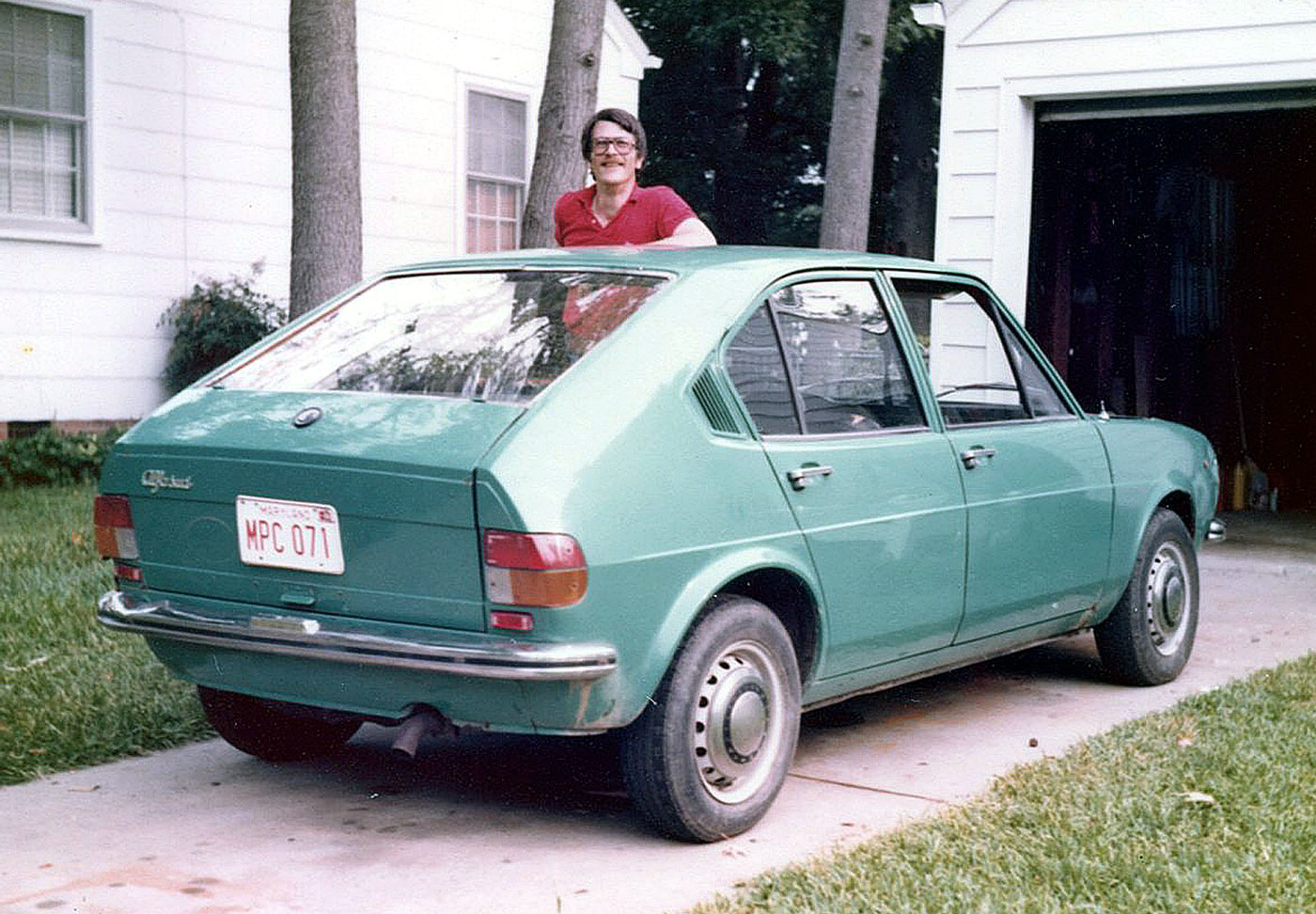
Evan Wilson, author of “Evan Wilson’s Giulietta Book” takes possession of the only Alfasud in the U.S. We wish we hadn’t sold it.
At the time we owned a 1750 Alfa Berlina and an Alfa 1600 Spider and were serious Alfa enthusiasts. The Sud was delightful. Here was a truly small Alfa with plenty of power, room, and smart lines. But what we remember most was its handling. Unlike our other front drivers, the steering was direct, light, accurate, just like a Giulietta; it was responsive, fun to drive and due to the low center of gravity afforded by the flat four configuration and light weight, it was easy to forget and forgive the front wheel drive syndromes. Despite all the physical evidence to the contrary, the Alfasud was a real Alfa.
The excellent handling characteristics were noted by the major car magazines of the era, the car won more than its share of COTY awards, and to this day, despite the serious problems with rust and electronics, the Alfasud has become and remains a classic of its type.
Tim Parker, a long time VeloceToday reader, found the Alfasuds at this year’s Birmingham show brought back memories. “In the early 1970s,I had a new, very early 1.2 while working as Managing Editor at Haynes Publishing – I wrote their Alfasud repair manual “from that car.” One great summer, I took off alone headed for Athens, Greece to meet others who had flown and discovered that there were no faster cars on the Yugoslavian coast road. I followed two Swedish-registered Jaguar E-types, four blondes in total and a German-plate BMW 2002 for a good 150 miles on that two lane as all three worked together to stop me passing. Hollow victory!” Finding a copy of the Haynes Alfasud manual would be a good compliment to Martin’s history.
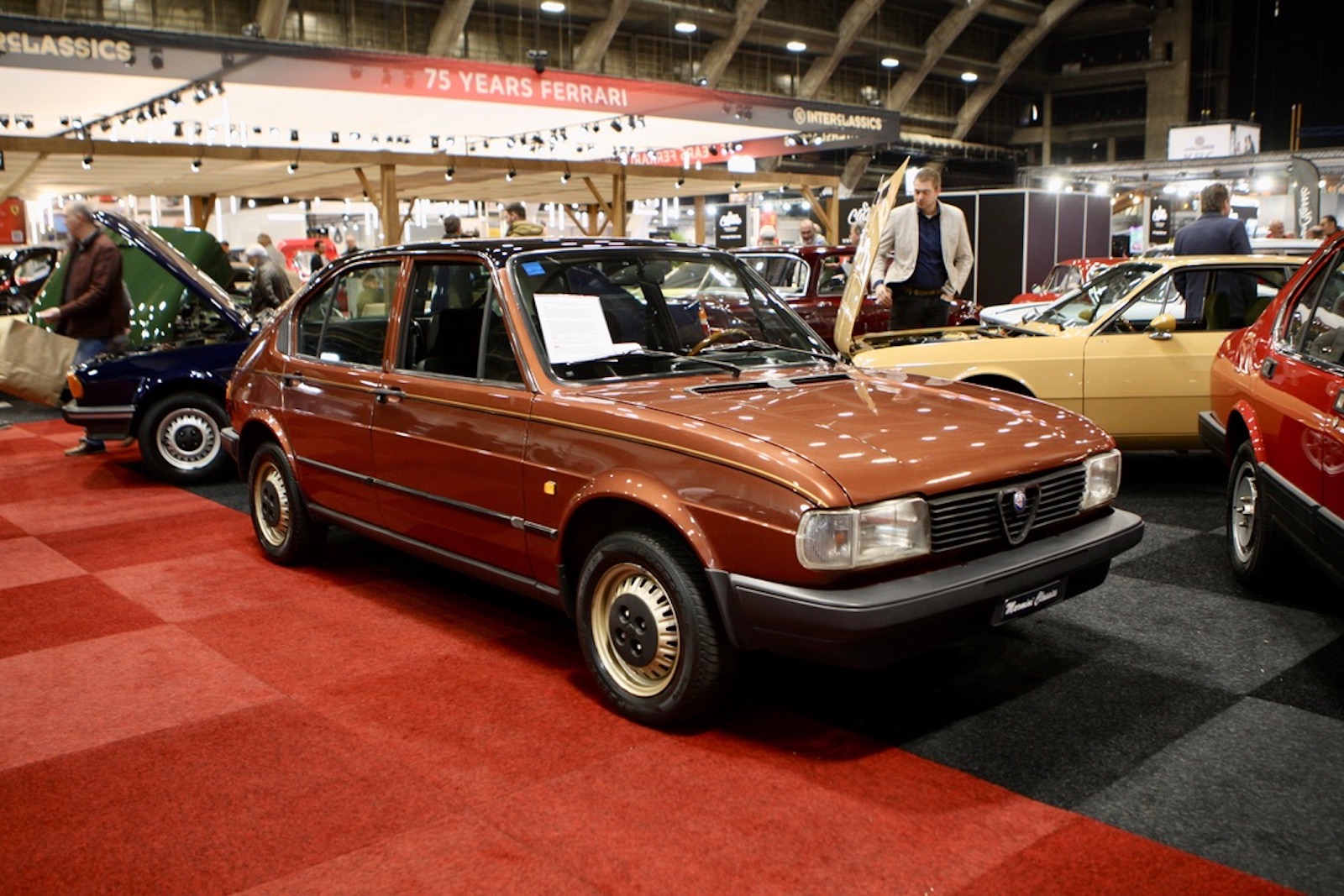
The enthusiasm factor: A 1983 Special edition Alfa Romeo Alfa Sud 1.2 Valentino that just appeared at the Brussels Interclassica show. Jonathan Sharp photo.
That this kind of enthusiasm still exists is also the reason Martin decided to write what is the only comprehensive Alfasud book in the English language, a book which is a runner up in the Royal Automobile Club’s Motoring Book of the Year award in the Motoring under £50 category. This is a truly welcome addition to anyone’s Alfa library, and the cost is very reasonable. It would be a great Christmas gift for the Alfisti in your family. Below, a few pages from the book.
For further reading:
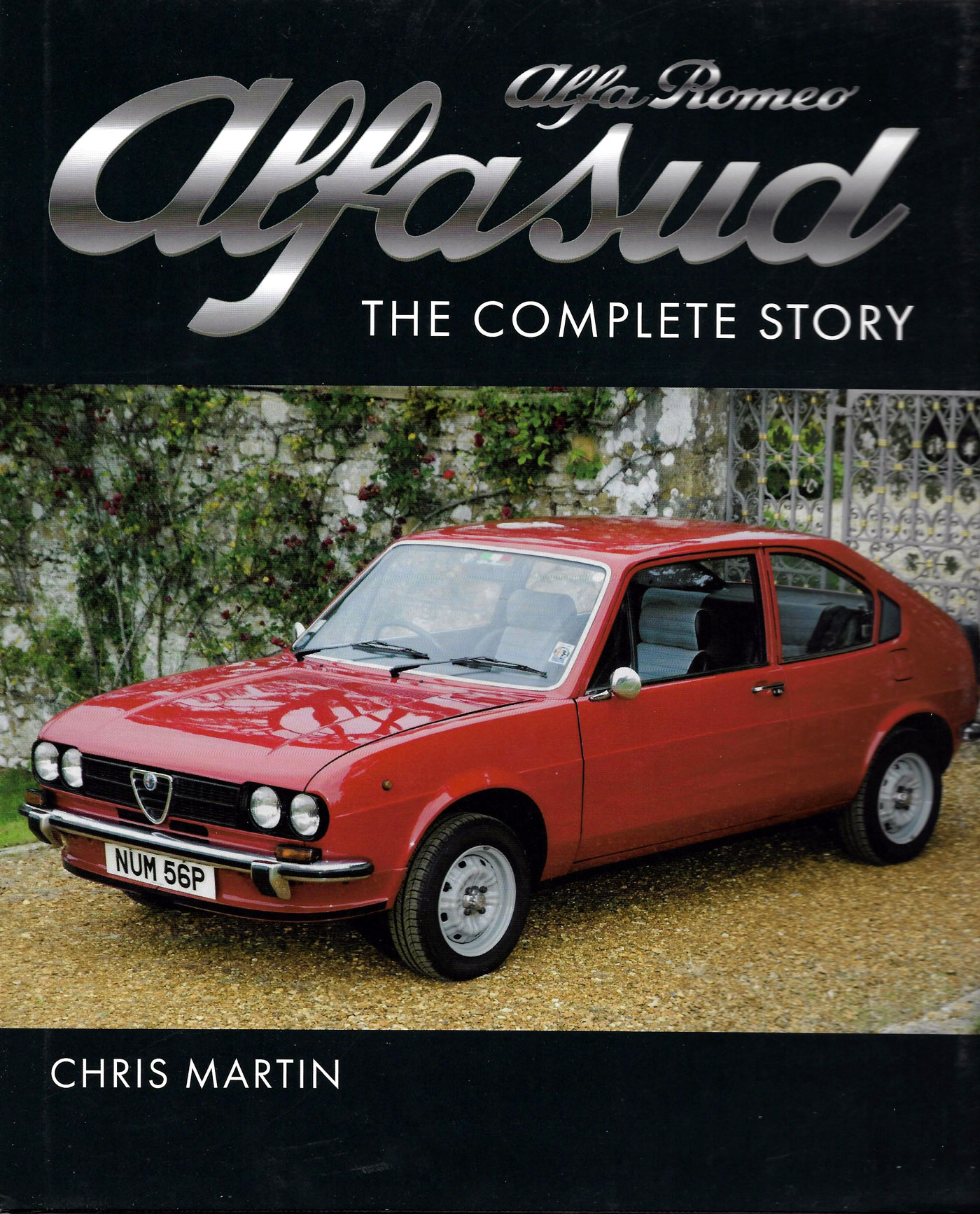
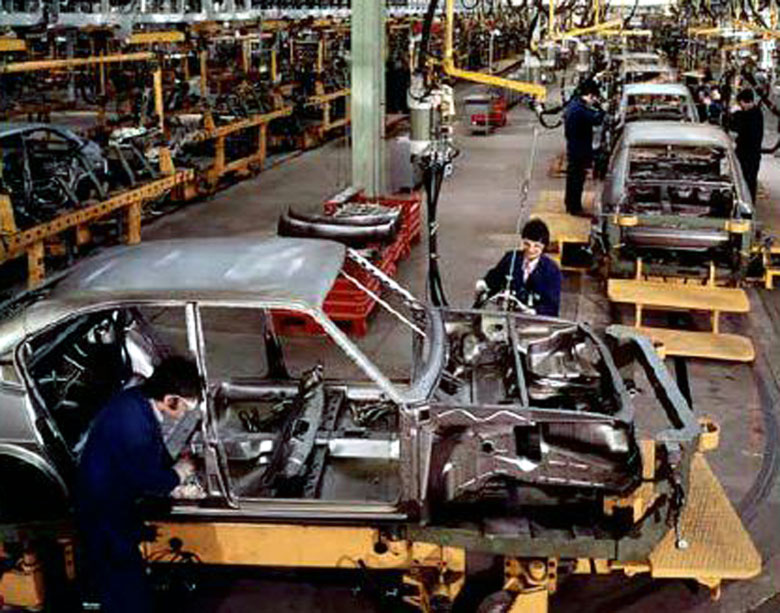
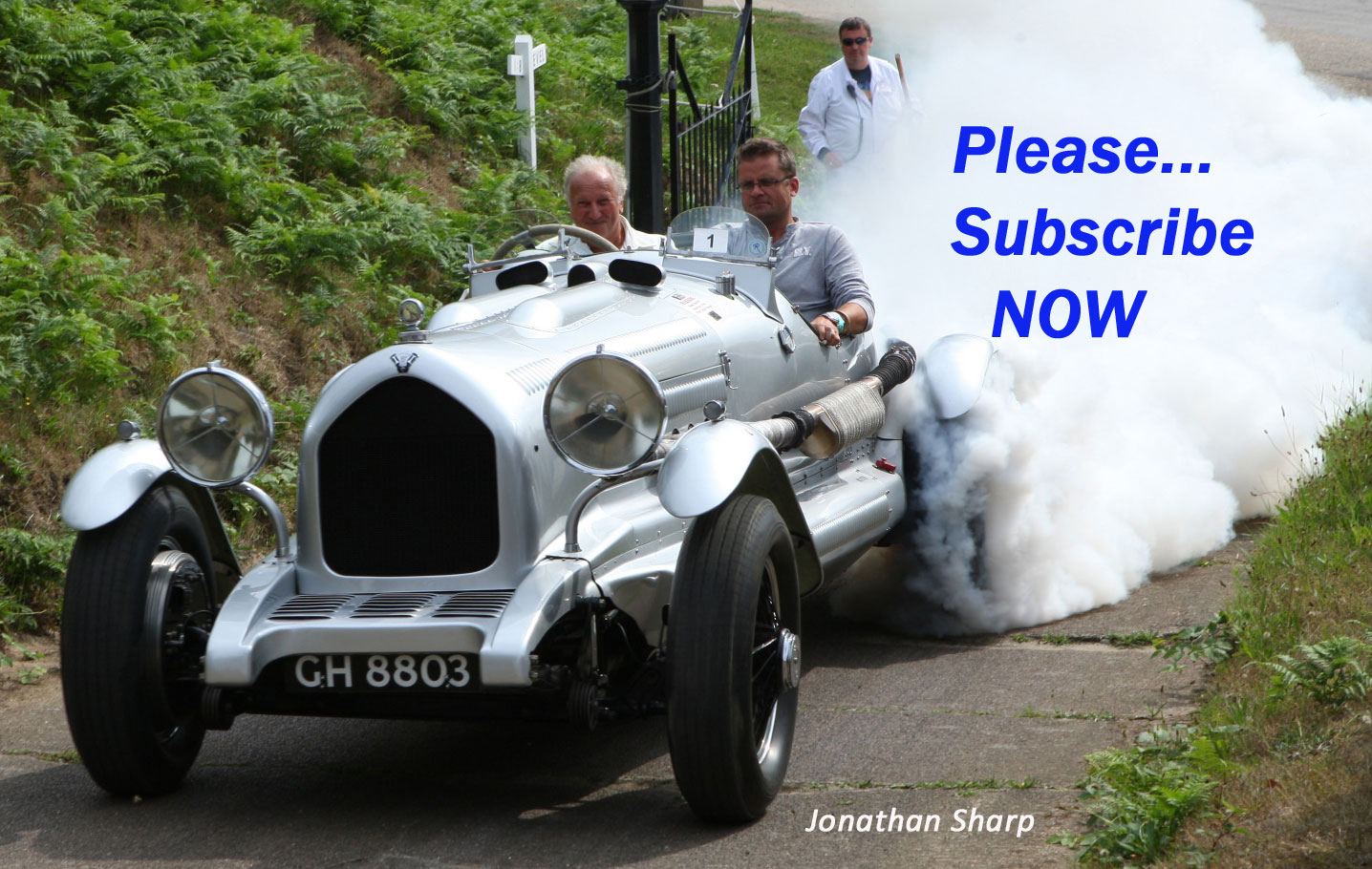
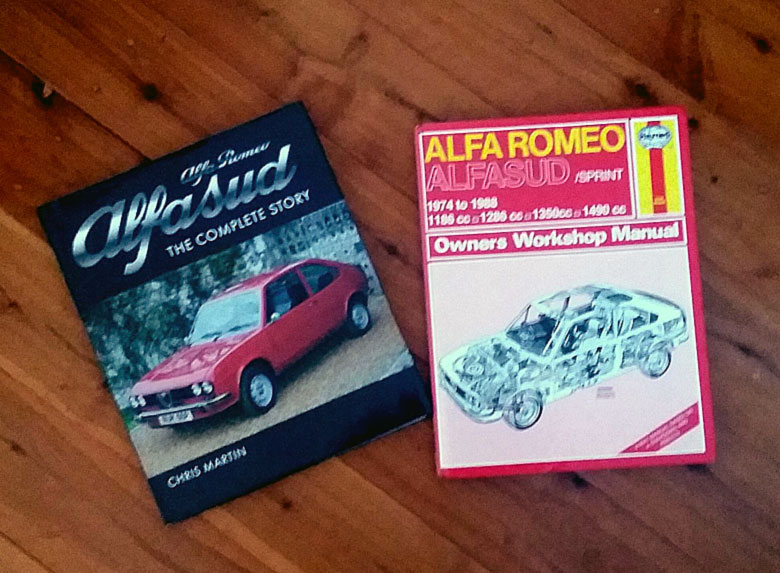
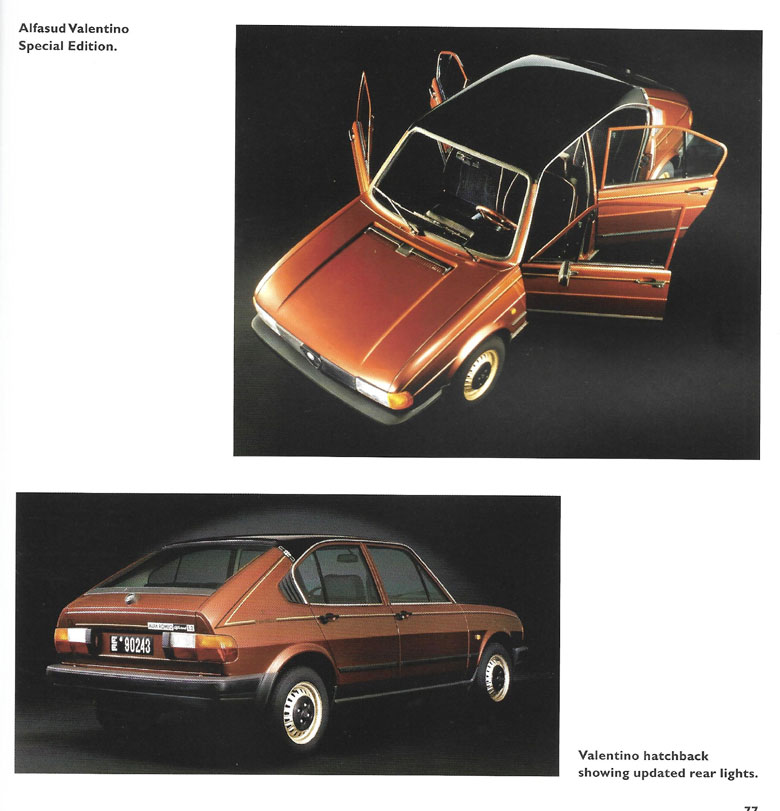
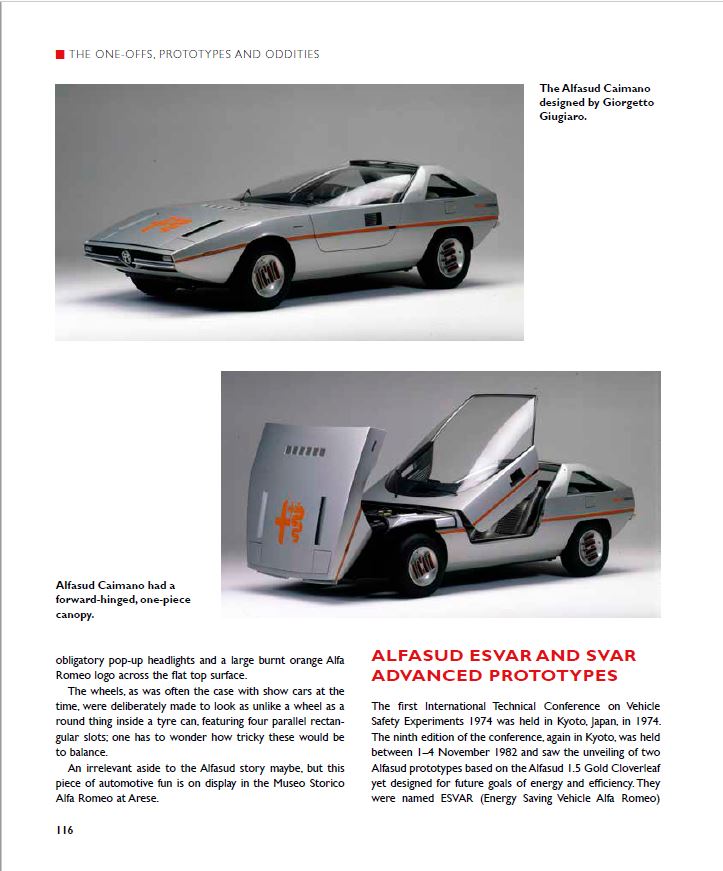
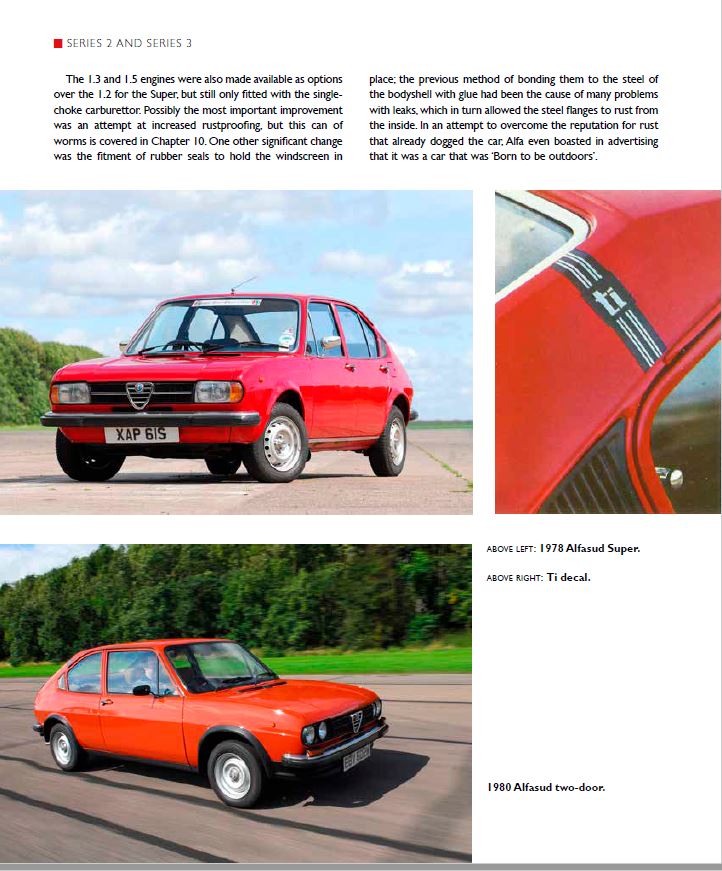
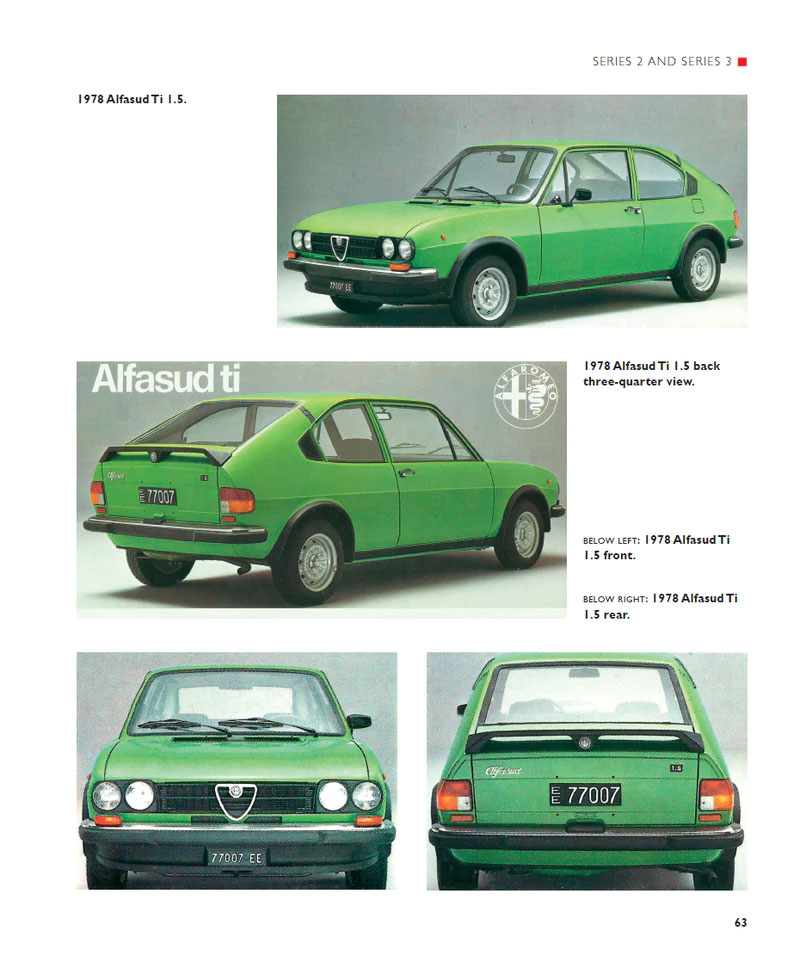
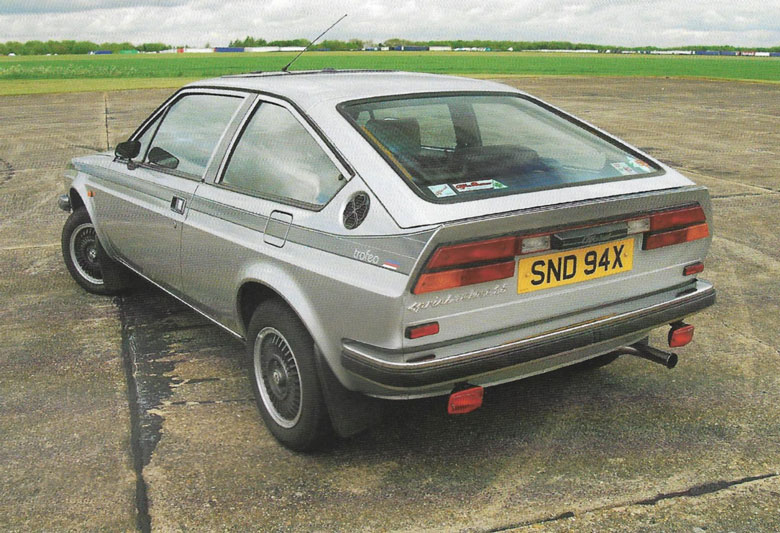
I owned five 1.5 Alfasud Sprint Veloce and loved them. They were my first Alfas. I’ll always remember the first I drove my first buy in Nice, France. The engine sounded great, a little throaty, but not too loud. The gears were slow to click in but progressively got easier as you drove it. First and second were smooth as butter and well laid out, but it wasn’t until I kicked in third that the magic happened. Cornering was a delight. She felt sure-footed but not too much as to send you into an impasse.
Yes, it was the poor man’s GTV-6, but in my twenties as a student, it was one heck of a bargain. Sadly, I didn’t have enough money to buy good tires. And cornering slowly going downhill, a rear tire exploded sending me straight into a ditch, narrowly avoiding an oncoming car. I have always regretted not repairing it. I’ve always wanted a Sprint Veloce here in the US. It was such a great little car that checked all the boxes for me.
And Keith is legendary in the Alfa crowd. A good guy with extensive knowledge of out Italian beauties. The book is on my list. Thanks VeloceToday.
p.s., I bought into the Russian metal myth but someone also told me strikes and leaving the metals outside for weeks was the real culprit. We’ll find out in the book I guess.
I owned an Alfasud 1.3 for twenty years, and only sold it when I was no longer physically able to drive it. I purchased the car in Italy in 1993, drove there (the Amalfi Drive in the ‘Sud was a high-point of my time in Italy. I then drove it in the UK for four years, before importing it to Canada in 1997. Once in Canada it was driven only in summer, until 2017. The car is now in the private Italian Car Museum of a friend here in Ottawa.
My ‘Sud was always reliable. There was about 150,000 K on the clock. What a car! It was great to drive what I think was the only ‘Sud in North America.